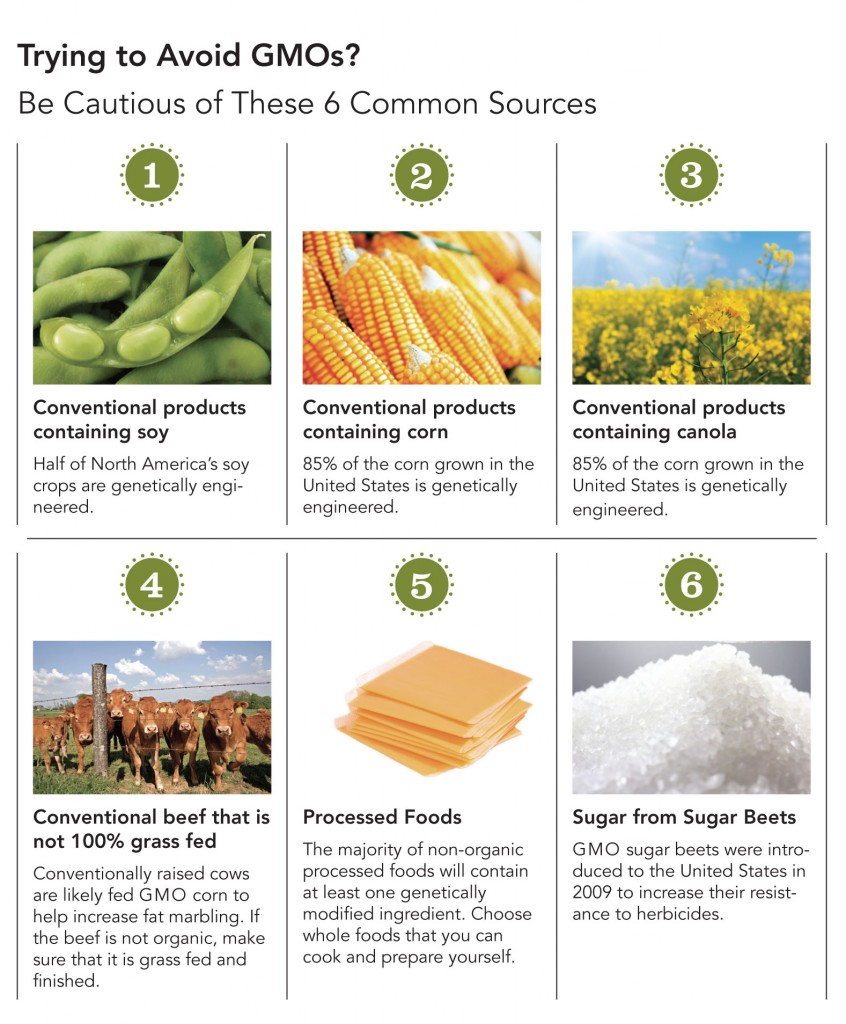Genetically Modified Organisms, commonly referred to as GMOs, are a big topic of concern in the American food industry. Why? The reason is that they are completely unnatural and do not occur ANYWHERE in nature. So what’s the problem? The quick and easy answer to that question is that GMOs are everywhere in our food, and we the people are not given a choice in the matter. Let’s learn some more about GMOs.
Where on earth did GMOs come from? An expert in GMOs, Jeffrey Smith gives a simple explanation below:
As mentioned in the previous video, the process of GMOs getting into our food supply begins with Monsanto’s Roundup formula. In an interview conducted by Dr. Mercola, Dr. Huber goes into more detail about the relationship between Roundup and GMOs. I know this is a long video, just watch the first 1 minute 30 seconds for the overview now.
Now that we know more about how GMOs get into our food, are they indicated on our food labels? Final answer… Nope! According to a fact sheet published by Colorado State University in 2010, “It is estimated that 60 to 70 percent of processed foods in grocery stores include at least one GE ingredient.” Additionally, the FDA regulates the wording on food labels (and the process becomes very tricky):
| Table 1. Examples of voluntary labeling under proposed FDA guidelines | |
| Wording on Label | FDA Comment |
| GMO free (does not contain genetically modified organisms). OR Not genetically modified. | Not recommended. “Free” implies zero content, which is nearly impossible to verify. “Genetically modified” is an inappropriate term, in that all crop varieties have been modified by plant breeders. |
| We do not use ingredients produced using biotechnology. | OK |
| This oil is made from soybeans that were not genetically engineered. |
OK |
| This cantaloupe was not genetically engineered. | May be misleading, because it implies that other cantaloupes may be genetically engineered. Currently, there are no such varieties on the market. |
| Genetically engineered. | OK |
| This product contains cornmeal that was produced using biotechnology. |
OK |
| This product contains high oleic acid soybean oil from soybeans developed using biotechnology to decrease the amount of saturated fat. guidelines. | OK. The underlined part is mandatory because it indicates a nutritional change. The rest is voluntary under the proposed guidelines. |
So how can I best avoid GMOs? Naturesfare.com provides some great information on GMO labeling and note 6 commons sources to be aware of:
This article covers not only the 6 commons sources listed above but the background and why labeling is important.
It seems so simple. But it does take conscious effort. Don’t eat processed foods (which should be a “no no” for the low carb, ketogenic or diabetic diet) and buy from your local farmers who are producing organic or sustainably grown crops.
Do some research and decide what’s best for you.


Leave a Reply